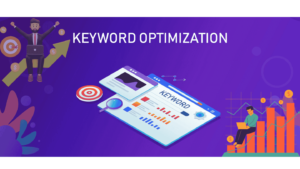Currently, Businesses is focusing on digital platforms and strategies as they are excluding or minimizing the use of offline marketing materials. The shift to digital channels is due to extensive opportunities of reaching consumers and targeting mechanisms that can be facilitated by several online platforms; in addition to real time analysis which can enable tracking of undertakings in this process.
It is for these reasons that this essay contains major types of digital marketing services, namely; SEO, SMO, PPC, SMM, Email marketing, and Content marketing to help the reader get an overview of the different service types a business can access today.
1. Search Engine Optimization (SEO)
It’s important to understand that SEO as a discipline is one of the cornerstones of the field of digital marketing since it is employed for achieving the highest possible rankings on SERP. SEO guarantees that whenever the potential consumers type in keywords related to a specific business, their website is ranked high enough on SERPs.
SEO can be divided into three distinct categories.
1. On-Page SEO: On page focuses on improving the separate web pages in an attempt to enhance rankings on search engine. On-page SEO is the practice of optimising the content of the page, as well as the HTML source code: keywords, Meta tags and headers internal links, usability and overall usability of the site.
2. Off-Page SEO: Off page SEO is essentially any activity done away from your Internet site to optimize the rankings of your site within a SERP and it might involve establishing quality backlinks from other relevant sites or the development of social signal and branding for influencing marketing reasons. This may require getting other reputable sites link to your web page. Over all, quality backlinks from other reliable site are often most successful for increasing rankings while quality backlinks from these same reliable sites are mostly effective for the same. Indeed, Social Media Signals/Mentions and Influencer Marketing are also at work as well!
3. Technical SEO: Technical SEO is the process used to internalize a website to make it easier for the search engine to locate and crawl it through functionalities such as site speed optimization, mobile responsiveness, security through SSL, and proper structure of the site’s architecture.
At its core, it is the organic process of enhancing the traffic an organization’s websites receives with the help of boosting its ranking on the most-used search engines including; Google, Bing, and Yahoo among others.
2. Social Media Optimization (SMO)
Social Media Optimization is a process of affecting brand awareness or popularity through social media sites and forums. Together, SMO is the process of increasing the popularity of a brand as well as its reach to its target audience through sharing of quality content in these platforms as compared to Social Media Marketing where majority of it involves the use of paid content; SMO however mostly relies on organic content in its acquisition of its online space.
Key aspects of SMO include:
Profile Optimization: Guaranteeing that their social media profiles, both business and personal, are fully filled in and look serious. This refers to unity of appearance in profile pictures, bios, contact information among social media profiles.
Content Sharing: Social media basically provide customers with chance to interact by sharing valuable and relevant content like blogs, images, videos, infographics etc.
Engagement: Engaging yourself in the social media conversations and sentiments such as reply to comment, like, share posts or brands, and mentions help to build a better relationship with the target customer and overall lead to more brand loyal.
Hashtag Strategy: Targeted hashtags are useful in the process of always categorizing and sometimes making content easier to be found by other users.
3. SEM: Pay-Per-Click (PPC) Advertising
Pay per click also referred to as cost per click is a model of advertising on digital media where businesses pay each time an individual clicks on the business’s advertisement hence, acquiring visits instead of relying on the general website traffic. Some of the examples of PPC advertisements include; Google AdWords and Bing Advertisements, and social media platforms such as Facebook and Instagram.
Key components of pay-per-click (PPC) include:
Keyword Research: In most cases, keywords considered during pay-per-click advertising campaigns require determination of the keywords that customers intending to use in the search engines would type to get the advertisements featured every time they search. PPC campaigns then use these specific words to ensure the ads appear when search is made using the words.
Ad Creation: Creating good ads that people will click regards to copy writing for the ad, choosing the right visuals for the ad and coming up with a good ad that will compel users to click through a particular ad.
Bid Management: In PPC, there is an auction system, according to which companies can bid for certain keywords. Good bid management makes sure that you derive maximum value for money, or the ROI is at its best.
Landing Page Optimization: It is thus only reasonable to maximize the conversion rates of the pages users end up on after clicking through an advert. This means having clear and concise messages/CTAs to match together and make sure the users convert.
As with other interactive advertising media, Pay-Per-Click advertising (PPC) has been praised for its quick returns as it also has high levels of measurability, through which business entity has the vantage point of having clear vision of how much it is spending and what it is getting in return.
4. Social Media Marketing (SMM)
Social Media Marketing is a process of advertising and promoting a business on various contexts of social media. While SMO differs, SMM comprises advertisements that cost money for the best outreach. All social media platforms including Facebook, Instagram, twitter, Linkedln and tik tok have adverts where one can target people of certain age, gender, location, interests and behaviors hence able to market their company to certain type of people.
Key aspects of SMM include:
Campaign Strategy: Setting of conflict free guideline on the goals, target, message and cost for social media campaigns is the foundation of social media marketing and any social media marketing should follow it.
Content Creation: Creating content in the form of posts, stories, videos and live streams that captures the target groups and are optimized for each application.
Targeted Advertising: Social media allows advertising to go straight to the target audience and make sure that the ad is placed in front of as many of the right people as possible.
Analytics and Reporting: Analytics tools applied in performance evaluation of social media campaigns offer information used to improve future social media campaigns.
With SMM, companies can build brand recognition, website traffic, leads or sales leads etc.
5. Email Marketing
Email marketing remains one of the most effective forms of digital promotion since it involves mailing subscribers with the purpose of (lead nurturing and relationship building as well as products and services promotion).
Key components of email marketing include:
List Building: Collecting email addresses from potential customers using sign-up forms, lead magnets or any other means is integral to successful email marketing. A high-quality list is vital.
Campaign Creation: Communicating through emails in order to convince the recipient to open and to stay engaged. This may encompass areas such as designing newsletters, promotional offer, event invitation or any other type of an email that contain them.
Personalization: With the help of precise subscriber data, more recipients will visit a site and click through in the case when an email is personally addressed.
Automation: In automation it is about setting up email messages that are sent based on predefined responses to activities like the subscription to a list or the leaving of items in the shopping cart.
Analytics: Checking open rates, click through rates, conversions, and ROI for an email campaign is absolutely essential in order to make adjustments in subsequent email campaigns and maximize ROI.
Of all the major types of marketing communication, email marketing takes relatively less costly yet can be applied to achieve variety of marketing objectives including sales promotion and building brand awareness, customer acquisition and retention.
6. Content Marketing
Content marketing is defined as a strategy involved in the delivery of valuable, relevant and consistent content in order to attract consumers. In contrast to direct advertising which just wants to sell, content marketing is more about offering something of value directly to your audience and thereby gradually gaining their trust.
Key components of content marketing include:
Content Creation: Creating one or the other form of content like, blog posts, articles, videos, podcasts, infographics and even eBooks that would benefit the intended audience.
Content Distribution: Incidentally relocating the message through the channels which are the social networks, mail, websites to a larger number of people.
SEO Integration: It is possible for an SEO practitioner to follow SEO recommendations disseminated in the creation of content pieces to guarantee traffic on the site.
Audience Engagement: Encouraging discussion between content and its readers through the comments section, share and likes to create more awareness to its audience making them customers.
Content Strategy: The strategy defines the type of content that is going to produced, the target market of the content marketing as well as the objectives of the content marketing initiative.
It also will assist to create brand awareness, generate traffic and leads and building the relationship between business and consumers.
Conclusion
It is crucial to understand that digital marketing is a big field that comprises an entire selection of services that have defining strategies and benefits for every specific technique. SEO, SMO, PPC, SMM, email marketing, content marketing are all strategic tools that aid in the easy reaching of target groups by businesses.





